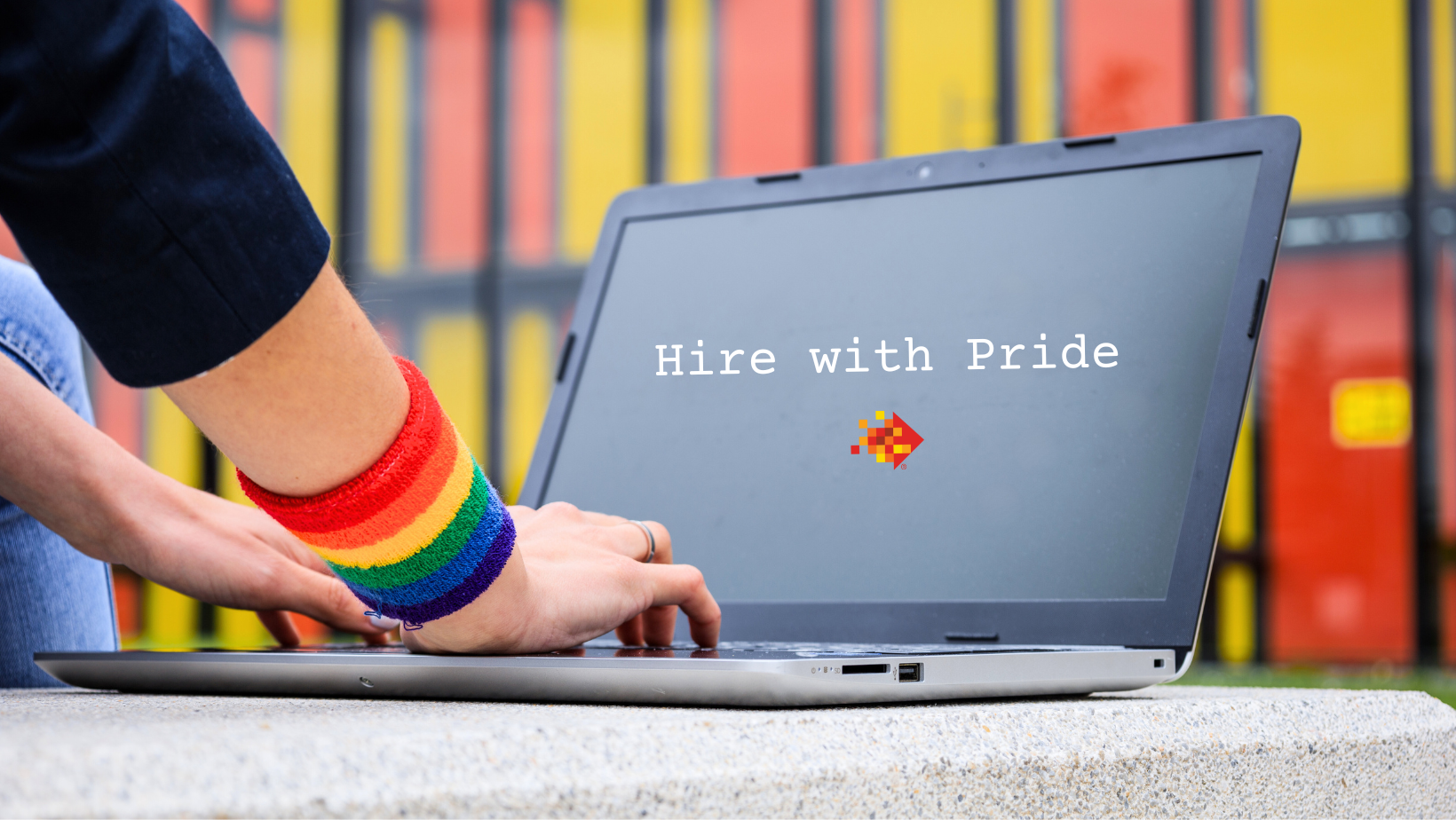This June, SPECTRAFORCE is focused on what it means to Hire with Pride. In this two-part blog series, we’ll dive into a topic that’s close to our hearts and that should be a part of any company’s Pride strategy —inclusive LGBTQ+ hiring practices. In an ever-evolving world, it’s vital for all organizations to create a workplace that celebrates diversity and ensures that everyone feels welcome and supported, and that all starts with inclusive hiring.
Many millennial and gen-Z folks specifically choose employers based on diversity and inclusion practices. And, of the 31 most-searched hiring phrases in this year’s SIA report, “LGBTQ+” ranked 26th. Therefore, companies must move beyond public gestures of support for the LGBTQ+ community to focus on genuinely creating a more positive work experience to remain competitive for top talent.
In this two-part series, we’ll explore eight ways that you can make your hiring process more inclusive to help attract top talent from the LGBTQ+ community.
Here’s your first four:
1. First, learn about the workplace challenges faced by the LGBTQ+ community every day.
Did you know that:
- Nearly 50% of LGBTQ+ employees express having experienced discrimination in the workplace?
- 38% of LGBTQ+ employees express having experienced harassment in the workplace?
- 34% of LGBTQ+ employees have left a job due to discriminatory treatment?
- 50% of LGBTQ+ employees are not out to their current manager or supervisor, and 25% are not out to anyone at their company?
At the end of the day, higher rates of job loss and lower numbers of job offers are true experiences for LGBTQ+ folks, especially for individuals that are younger in age, Black non-Hispanic, and white non-Hispanic, gay cisgender men, and individuals with lower education levels. The Social Science Network shares that, on average, those who fall into sexual and gender minorities experience 22% lower earnings ten years after graduation, a direct result of the daily hurdles described above. It’s essential to be aware of these challenges as you work to implement or improve inclusive hiring practices at your organization.
2. Use blind applications or, better yet, let inclusive AI sift through applicants.
When it comes to inclusive hiring, we used to say that an open mind is key. Now we know that unconscious bias slips in even when people make a concerted effort to be DEI-minded.
One of the easiest ways to ensure that applicants are evaluated solely on their skills and qualifications is to utilize blind applications, where names, ages, university names, and other demographic information is redacted. Even better, the new gold standard of diverse recruitment is bringing in an AI system that uses the power of deep learning to remove unconscious bias in the hiring process and promote candidates who are likely to be members of protected groups.
3. Craft inclusive job descriptions that go beyond including an EEO statement.
Take a look at your job descriptions and make sure that they reflect your commitment to diversity and inclusion. This goes beyond a copy-pasted Equal Employment Opportunity (EEO) statement and should include:
- Using inclusive language that welcomes candidates from all walks of life
- Avoiding gender-specific pronouns
- Focusing on the qualifications and experiences necessary for the role, and minimizing gender-associated adjectives such as “ambition” or “empathy”
- Including a list of your inclusive benefits
Another important note: Studies show that women are much less likely than men to apply for a role if they don’t meet 100% of the qualifications. Being aware of the number of requirements, and ensuring that they’re all truly necessary, can broaden your applicant pool significantly!
4. Foster recruitment channels specific to diverse candidates.
Expand your recruitment channels to include platforms and networks that specifically cater to the LGBTQ+ community. This can be, but isn’t limited to, LGBTQ+ job boards, professional networking groups, and partnerships with universities and LGBTQ+ organizations. A study produced by McKinsey indicated that 50% of transgender folks feel that they cannot be themselves during the job application process. When you actively engage with LGBTQ+ organizations, you’ll tap into a talented pool of candidates who may bring unique perspectives and experiences to your team, all while demonstrating your commitment to inclusivity by working with an organization they trust.
Key tip: Building individual connections with non-staffing organizations as your recruiting channels can be time-consuming and yield few results. Using a recruitment firm or staffing agency is always the best bet for diversified talent pools, because their reach into national and local organizations extends much further.
These four guidelines will help to make your organization more attractive and accessible to members of the LBGTQ+ community. Examining your approach to applications, job descriptions, and recruitment channels will position you for next week’s part two, in which we’ll explore inclusive interview, hiring, and retention techniques.
Sources:
https://www.hrc.org/resources/corporate-equality-index
https://williamsinstitute.law.ucla.edu/publications/lgbt-workplace-discrimination/

